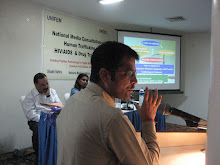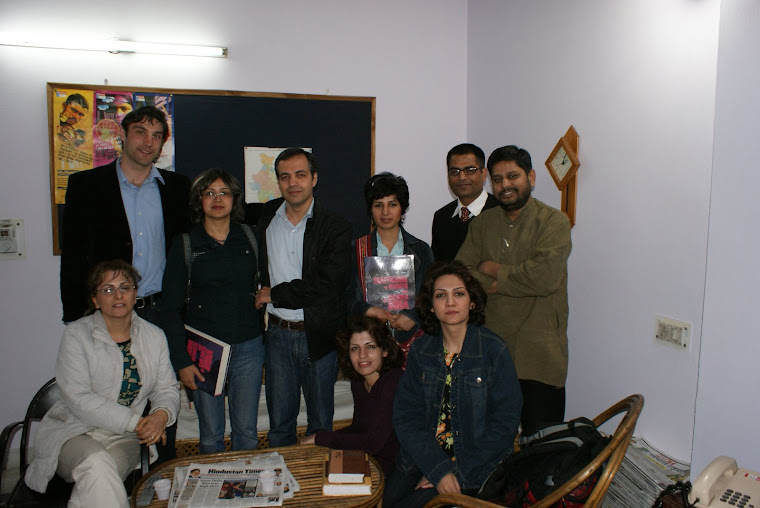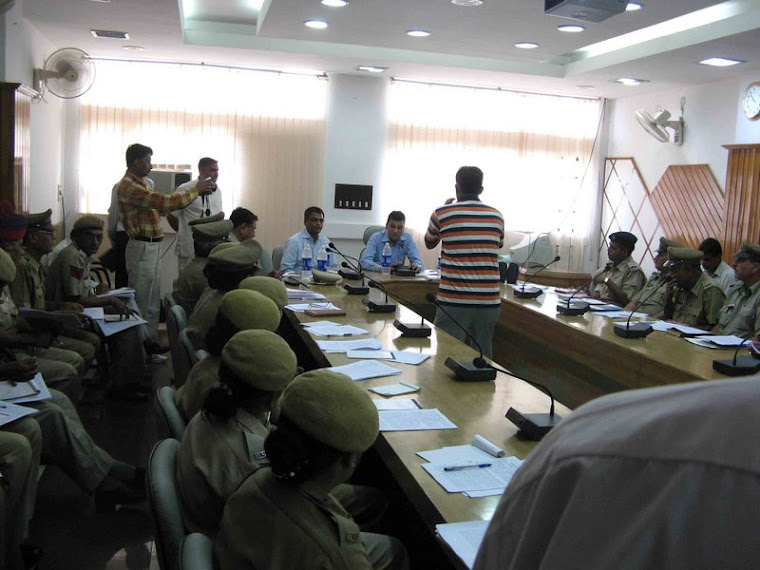Judges and the Right to Information Act
D V Shylendra KumarFirst Published : 20 Aug 2009 11:01:00 PM IST
Last Updated : 19 Aug 2009 11:16:01 PM IST
It is a matter of utmost paradox that the chief justice of the most powerful Supreme Court in the world should be expressing, apprehension for the safety and security of the judges of the superior courts in this country by saying that revealing the particulars of assets of the judges and throwing open the information to public domain may result in harassment to judges and in turn prevent the judges from performing their duties without fear or favour. He has also expressed his fear that this may impair the independence of judges and affect their functioning.
It is equally ironic that the apprehension should have been expressed by the chief justice of the Supreme Court of India, that too in an interview given to a news daily and as the chief justice of the apex court of the country and in the context of the applicability or otherwise of the provisions of Right to Information Act (RTI Act), a piece of legislation which was commended for legislation by the very Supreme Court in terms of its judgment in ‘Peoples union for civil liberties vs Union of India’ (AIR 2002 SC 2112J). This judgment upholds the high moral principle that the rule of law should operate uniformly; that the Constitution is above every one; that rights of citizens guaranteed under Article 19(l)(a) of the Constitution of India, i e, right of expression, should outweigh the personal difficulties and hardships that can be pleaded by persons occupying high positions and serving as public servants. It must be remembered that the Supreme Court had emphatically ruled that no immunity can be claimed by any person, including one holding a constitutional position on the ground of any possible exposure to harassment and consequential difficulties if the particulars of the assets held by persons in such high public positions are revealed and made public. As is well known, the Right to Information Act was enacted with the object to provide for setting out the practical regime of right to information for citizens by, ensuring access to information on any given issue.
The extent of applicability of the provisions of the RTI Act and persons or officers brought within the scope of the provisions of this Act naturally can be a matter for judicial determination. It is possible to have a divergence of opinions concerning the interpretation of the meaning and extent of applicability of the relevant provisions of the RTI Act. The object of this article is to dispel the most damaging and uncalled for impression created in the minds of the public at large and litigants in particular, that the judges of the superior courts in this country, who enjoy high constitutional protection and immunity, are wary of disclosing their assets or are not prepared to throw open the information relating to the acquisition and holding of their assets to public domain; that they would rather prefer to keep the information well-guarded and also cover up a possible misdeed or a possible improper acquisition of assets and would like to avoid either scrutiny or an explanation, if one was needed in respect of their asset holdings.
Info sought on assets
But such an impression has been created by a writ petition filed before the Delhi High Court on behalf of the Supreme Court of India, orders on which are pending. The petition questions the legality of an order passed by the central information commissioner, the purport of which is that the registrar general of the Supreme Court is required to furnish certain information sought for by someone who is entitled to do so. The information sought for is about the assets held by judges of the Supreme Court and high courts.
Meanwhile, the Chief Justice of India has articulated an opinion that seems to have created some misgivings in the minds of the people. This was in an interview that he gave to some news dailies. A further development is the failed attempt to introduce a Bill in Parliament for enacting a law making it obligatory for judges of the superior courts to disclose their assets through declarations filed before the chief justice of the high courts concerned. The judges of the Supreme Court, including the chief justice, would have been required to file such declarations before the President of India.
What, however, created a storm was the provision in the Bill that information contained in the said declarations would remain confidential and not accessible to the public. Not quite unexpectedly, the Bill has drawn flak and has become a subject for controversies. The Bill will naturally take its course in accordance with Parliamentary procedure and constitutional provisions. The immediate objective of this article is to dispel the impression created in the minds of the people about the conduct and behaviour of the judges of the superior courts of this country and to convey the message that whatever has been said and done in this regard is not necessarily the way that all judges of the superior courts view this issue.
On the legal plane, the Chief Justice of India does not have the authority to speak for all other judges of the superior courts, whether of the Supreme Court or of high courts, unless any of them have either confided in the chief justice or have authorised him to speak on behalf of others also.
Judiciary is one among the three organs of the state as envisaged in the scheme of our Constitution and has a unique role to play in comparison to the executive and the legislature, which are the other two organs. Under the scheme of our Constitution, judiciary is assigned the role of acting as an arbiter of disputes not only in respect of the disputes arising between citizens and citizens and persons and persons, but also in respect of disputes arising between the state and the citizens. For this purpose, the judges of the superior courts have been conferred with the power and jurisdiction to review both the executive actions and the legislative actions of the state on the touchstone of the constitutional provisions and relevant statutory provisions.
The architects of our Constitution were conscious of the very significant and special role assigned to the judiciary in the scheme of the Constitution. It was envisaged as the organ for protecting the rights of the citizens, guaranteed under the Constitution. There was the recognition that judges, particularly the judges of the superior courts, who have the power of judicial review of administrative and legislative actions, should function without fear or favour and that the judiciary should remain totally independent and fully insulated from any external interference.
This has been ensured through appropriate constitutional protections, among which is a definite and assured tenure of office to every judge of the superior courts of this country. When once a judge assumes office, till he lays down the office on attaining the age of retirement as indicated in the Constitution itself, he/she is insulated from any outside interference in his/her duties. The tenure of office of a judge of the superior court can be put to a premature end only when he/she is impeached by a resolution of Parliament, supported by not less than two-thirds of the combined membership of Parliament. Further, an impeachment requires that the motion for impeachment be based on proved misconduct on the part of the judge concerned.
No impeachment so far
How foolproof and effective the protection is can be gauged from the fact that not a single judge of the superior court has been impeached so far in the past 59 years of the working of the Constitution and in fact a motion of this nature was moved in Parliament only once in the isolated case of Justice V Ramaswamy, which also failed for want of requisite majority support. It is beside the point whether this failure was because of some political considerations?
The founding fathers of our Constitution have provided such a foolproof protection and security to a judge and to the tenure of office occupied by judges only to ensure that the judges of this country not only act in absolute independence, in the sense that they are not in any way troubled or pressurised by the possibility of their losing the office or post, but also to ensure that they always act without any fear or favour. In fact, every judge of the superior courts, before assuming office, subscribes to an oath either in the name of god or on solemn affirmation, as envisaged under the Constitution, which is as under:
I, AB, having been appointed chief justice (or a judge) of the Supreme Court/high court at…, do swear in the name of god/solemnly affirm that, I will bear true faith and allegiance to the Constitution of India as by law established, that I will uphold the sovereignty and integrity of India, that I will duly and faithfully and to the best of my ability, knowledge and judgment perform the duties of my office without fear or favour, affection or ill-will and that I will uphold the Constitution and the laws.
There cannot be any better protection to a judge than the one given by the Constitution. There is no question of any person either improving upon the protection or in any way detracting from such protection, whether by any executive action or even by legislative measures, unless the relevant provisions of the Constitution itself are amended. Such an impregnable protection and assured term of office is a mark of the faith and confidence reposed in the judges by the Constitution. It is thus incumbent on them to function with ability, competence, impartiality and fearlessness.
The institution of the court is sustained by the faith and confidence reposed in it by the people, especially by the litigant public. The judicial wing of the state thus cannot fail the people. It is with this faith and confidence that litigants approach the court for any relief. When once that trust and confidence is eroded, there are no seekers of justice or persons coming for relief before the courts of law and there cannot be any further justification for the existence of courts.
In the scheme of our Constitution, courts are here to stay and judiciary has a unique and specified role to play. There is no question of the state being envisaged without the judicial wing. It is a well thought out scheme and design that there should be checks and balances on the functioning of all wings of the state. Ensuring that the executive and the legislative wings of the state not only adhere to the assigned roles but also do not transgress or exceed the constitutional limitations, is the responsibility of the judicial wing of the state.
Confidence of litigants
Effective and purposeful functioning of the judiciary for achieving this object should be ensured at all times. It is for the judiciary to inspire at all times the confidence of the litigant public through its own conduct. There cannot be any discordant note on this. There can never be an impression conveyed or created in the minds of the people that judges of this country are in any way either wanting in this task or are afraid in any manner ill performing their duties and functions.
In this background, on the issue of the judges of the superior courts disclosing their assets or making it known to the public at large or as the phrase goes throwing it into public domain, it is clear that there need be no hesitation or reluctance on the part of the judges either to disclose their assets or to make available the information to the public at large.
In fact, it is a misnomer to think that the judges of the superior courts are not ready to disclose their assets. The judges of the high courts are appointed after being drawn from the Bar or on promotion from the subordinate judiciary in the ratio of 2:1 which means that for every promotee judge, there will be two judges appointed directly from the Bar. Judges promoted from the subordinate judiciary happen to be occupants of the post of district judge and every district judge is required to declare his/her assets every year, as part of the conditions of service.
(To be concluded)
(The author is a Judge in the High Court of Karnataka in Bangalore)













































